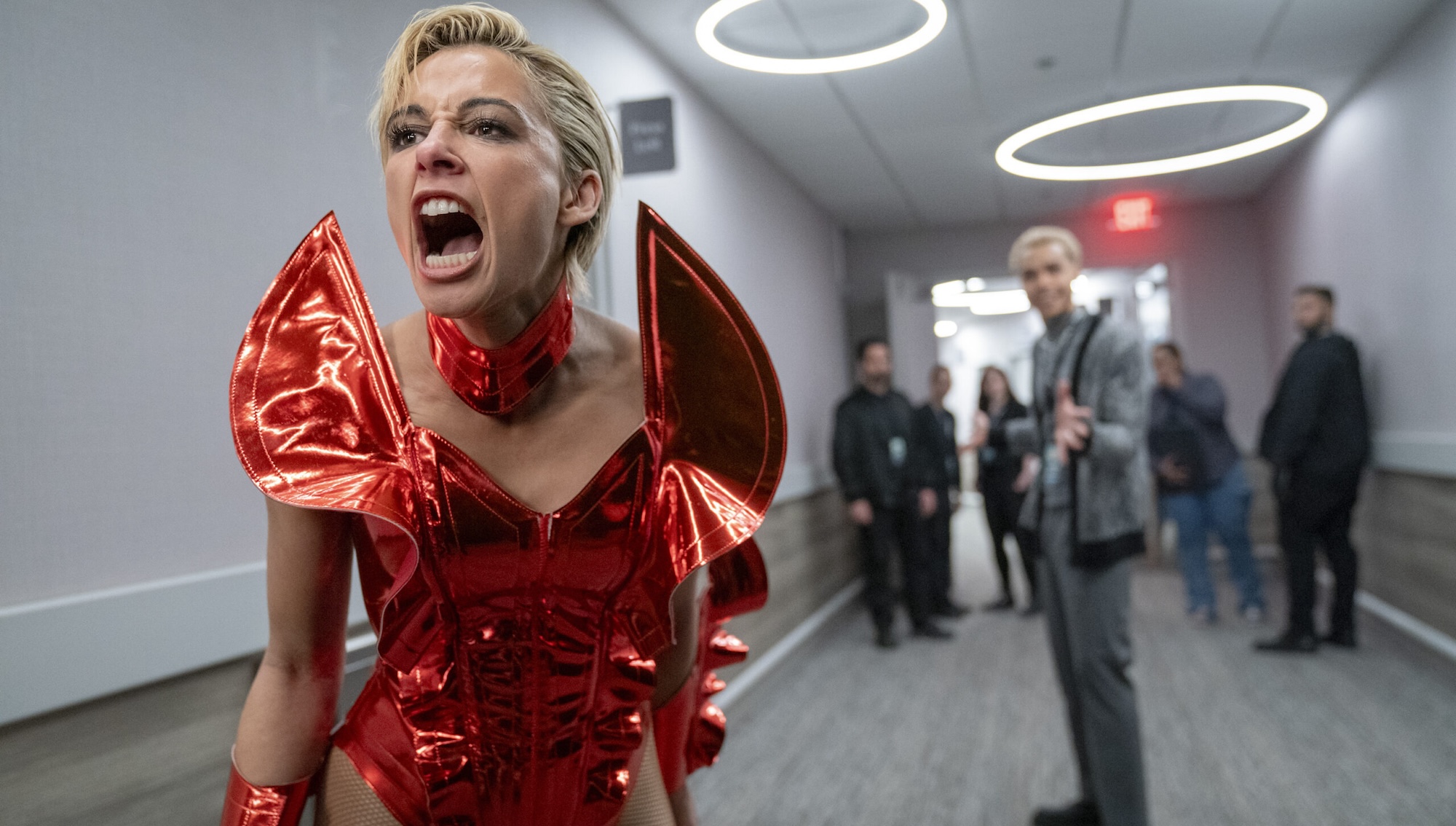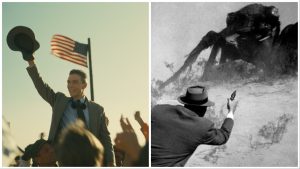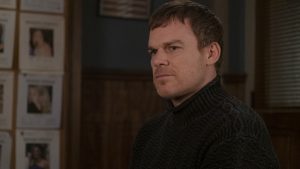
In 1936, Universal Pictures was at the forefront of the American horror genre. The studio built by Carl Laemmle, a man who did not personally care for spooky stories, established its reputation in the silent era, in part, on some of the most iconic chillers starring Lon Chaney Sr. And in the 1930s, they defined what still remains our image of Halloween decorations via classic monster movies like Dracula (1931), Frankenstein (1931), and The Mummy (1932).
But by the mid-point in the decade, conventional wisdom suggested horror had run its course. British censors outright banned Universal’s Bela Lugosi and Boris Karloff two-hander, The Raven (1935), while the newly emboldened Hays Office (the American censors) cracked down so hard on the screenplay for Dracula’s Daughter (1936) that it was rewritten from being a blasphemous James Whale spectacle starring Lugosi into… a B-movie that still pushed buttons with its implicit lesbianism. It also underperformed and the message throughout town was that horror pictures were done, particularly with Laemmle losing control of Universal to new owners who abhorred the genre.
… And they were done for about three years until the said new owners did a double-bill re-release of Dracula and Frankenstein and were shocked to see lines around the block. Instead of horror being a relic, it proved to be a revenant that could not die, and the same studio was soon back in the business of monster movies while competitors like producer Val Lewton at RKO arguably “elevated” the genre with more psychologically rich fare such as Cat People (1942) and The Body Snatcher (1945).
All of this is just a reminder of how shortsighted suits with no taste for the genre can be after The Hollywood Reporter ran a ridiculous headline—with artwork depicting the Universal Monsters in an emergency room, no less—titled “Why Hollywood Is Terrified of Horror Fatigue in 2025.”
The dubious claim of “fatigue” in the horror genre is credited to the fact that Smile 2—an effective and well-acted follow-up to 2022’s “demonic curse” movie from Parker Finn—opened at $23 million two weekends ago, which is only about $1 million more than the first Smile earned in 2022. Obviously a key factor in this limited (but still consistent) growth is that unlike in 2022, this spooky season has two zeitgeist-appealing horror movies at the box office instead of one, with Terrifier 3 continuing to astonish and overperform after the unrated, maximalist indie gorefest opened at number one the weekend before, trouncing a superhero movie, no less (if one can credibly call Joker: Folie à Deux that).
As THR breathlessly reported, “Two years later, Smile 2 arrived during… an entirely different landscape where the marketplace has become oversaturated, setting off alarm bells at major and indie studios.” One unnamed “top studio exec” even fretted to the trade that there were 26 widely released horror movies this year, and that 18 have already been dated for next year! “You don’t want audiences to be satiated by the time you come along,” the source said, presumably with a long sigh.
That is definitely one way to look at two horror movies doing big business around Halloween season. Another might be how an actual veteran of the genre, producer and Blumhouse Productions founder Jason Blum, described to us the Terrifier 3 and Smile 2 doubleheader a few weeks ago: “We have a weekend of two horror movies at once, and normally that’s verboten, you can’t have two horror movies both do over $20 million or whatever, but it looks like both of them are going to perform incredibly well. Now it is October, which is an unusually great month for horror, but it looks like there is a real appetite out there.”
Indeed, but the truth is there always has been that appetite, which Blum is also keenly aware of as he describes the current cinema landscape as “quite bleak, but horror is a really bright spot in that landscape.”
Whether or not younger moviegoers really are disengaging from the act of moviegoing—or simply becoming disengaged by the IP blockbuster-obsessed strategies of 2020s Hollywood studios—they, like every generation before them, still see the appeal of gathering in the dark and being chilled, tickled, and/or scared by something going bump in the night. The communal experience of being frightened into gasping or jumping didn’t go out of style in 1936, nor will it do so in 2025.
What thinkpieces like THR’s baffling “horror fatigue” article do is offer an insight into the increasingly conservative, reactionary, and ill-advised caution of C-suites across modern Hollywood. Because even this new term of “horror fatigue” seems to show both a fundamental misunderstanding of the horror genre, as well as the money-making franchises such anxieties really reflect: superhero movies.
While “horror fatigue” is a fallacy, there is no denying “superhero fatigue” in some form exists. This truth was borne out in 2023 when every one of WB/DC’s four mega-expensive superhero movies flopped, as did one of Marvel Studios’ own supposed gold standards via The Marvels. Ant-Man and the Wasp: Quantumania, meanwhile, was at the very least a major disappointment.
However, we would argue a key reason that superhero movies are no longer the sure-things they were in the 2010s is because of their makers’ fixation on streamlined, franchised familiarity. While the world of comics is rich in its diversity of storytelling, genres, and styles—including horror!—most superhero movies of the past 20 or so years have followed a similar playbook defined by targeting all four-quadrant audiences via self-deprecating humor and similar story beats about heroes coming together to form a team that defeats a sky-beam in between a couple of winks and quips at the audience. While the industry has sunk more and more money into this genre, its new releases have increasingly blurred the differences, leaving us with a landscape of interchangeable sameness.
But even as that “fatigue” has become demonstrable, it by no means suggests the superhero genre is about to go the way of the Western next year. Deadpool & Wolverine just grossed $1.3 billion! What’s changed is the certainty for the executive class that a good bet can also be an absolute guarantee.
Such anxiety is now trickling down to the other end of the spectrum; whereas superhero movies are almost uniformly treated as $200 million affairs these days (even the small-scaled Joker 2), horror movies are generally inexpensive investments, hence their appeal to studios.
You can make a movie like the first Smile for $17 million and gross $207 million worldwide, launching a franchise in the process. Which means indie studios can also get into the game, with the last decade in particular being defined by independent and supposedly “elevated” horror, a la A24’s many recent hits in the genre, or for that matter NEON’s own Longlegs being this summer’s biggest indie hit after it grossed $108 million worldwide on a budget reportedly south of $10 million.
But such fixations on dollars and cents risks missing the forest for the trees. It isn’t just that horror is cheap to produce (as the THR article unremarkably stresses again and again). It is also that the genre is elastic and open to constant interpretation and reinvention.
Longlegs indeed was the indie sensation of the summer, and it is defined by a talky, cerebral, and aloof disposition. Most viewers who saw it in the theater didn’t even realize the silhouette of the Devil is present throughout half the movie. Conversely, Disney/20th Century Studios could make a more mid-budgeted sci-fi/horror spectacle like Alien: Romulus, which grossed $351 million worldwide. An old-school creature feature—even more so than the original 1979 Alien it so lovingly emulates—the movie is all about the image of an acid-drooling beastie hissing into the camera. It still works too.
Even this October’s surprise sensation, Terrifier 3, is an indie hit that no one would mistakenly call elevated. It is, in fact, a naked throwback to ‘80s slasher movies like A Nightmare on Elm Street (1984) and Friday the 13th (1980), only this one unburdened by the limitations placed on gore due to an R-rating and major studio-financing. Which is to say it’s a nasty little movie about a million years miles from Longlegs or modern A24 classics like The Witch (2015) and Hereditary (2018).
The diversity of horror comes from filmmakers being liberated to target individual niche audiences as opposed to everyone. It is also accessible for young or innovative filmmakers to play in that genre due to a relative lack of budget restraints and (perhaps more importantly), studio-mandated limitations because the popularity of the genre is defined by a handful of ancient IPs. Any attempt to liken it to the inherent limitations of the modern superhero genre is disingenuous, even as it reveals other shortsighted mistakes currently existing within the industry.
“All at once, starting in the mid-2010s, it seemed as though audiences had suddenly decided that comedies and awards movies were best watched at home,” a Comscore analyst lamented to THR. “And now we sit and wonder if the previously surefire horror genre is no longer as theatrically viable, either.”
First, this again shows a complete inability to read the horror genre’s audience of both hardcore fans and casual moviegoers looking for a fun time at the cinema. Just because a few horror movies underperformed at the beginning of the year does not mean “exhaustion” has set in. It means those particular films did not connect with audiences, either due to their merits or marketing, and Hollywood executives will have to maintain some responsibility about what gets greenlit and not just point to an algorithm which confirms horror is a “surefire” guarantee. It’s a bit like knowing the difference between the popularity of a Ryan Reynolds-as-Deadpool movie and a Ryan Reynolds-as-Green Lantern movie, no?
Furthermore, did audiences even really reject comedies in the mid-2010s? There is no case study in a major expensive comedy flopping so badly that the industry abandoned laughers to the streaming services. Some 2010s comedies flopped, and others overperformed like the late-in-the-decade Game Night (2018), or just last year’s Anyone But You, for that matter. In fact, that holiday release starring Sydney Sweeney and Glen Powell nearly multiplied by nine times its reported $25 million budget with a worldwide gross of $220 million, even in spite of tepid reviews. One might wonder if some studio execs are now kicking themselves over passing on a Powell-starring rom-com like Hit Man, which actually received rave reviews out of film festivals last year. Unfortunately, no studio wanted to seriously bid for it, so Netflix got the rights.
It would seem our modern Hollywood executive class is defined by an excess of caution in a time when everything needs to be run through supposedly predictive algorithms meant to appease stockholders in the parent company. As a result genres as timeless, and cheap, as comedy and horror are constantly second-guessed by studios convinced they need to funnel more of their annual budgets into nine-figure tentpoles. Well, Joker 2 allegedly cost in the neighborhood of $200 million, and Smile 2 cost under $30 million. The latter should outgross the former in the U.S. by Thanksgiving, even while “losing” ground to another horror movie in the marketplace doing well.
Maybe it’s time to rethink which genre is the safe bet?
The post ‘Horror Fatigue’ Is a Hollywood Delusion That Will Never Exist appeared first on Den of Geek.




